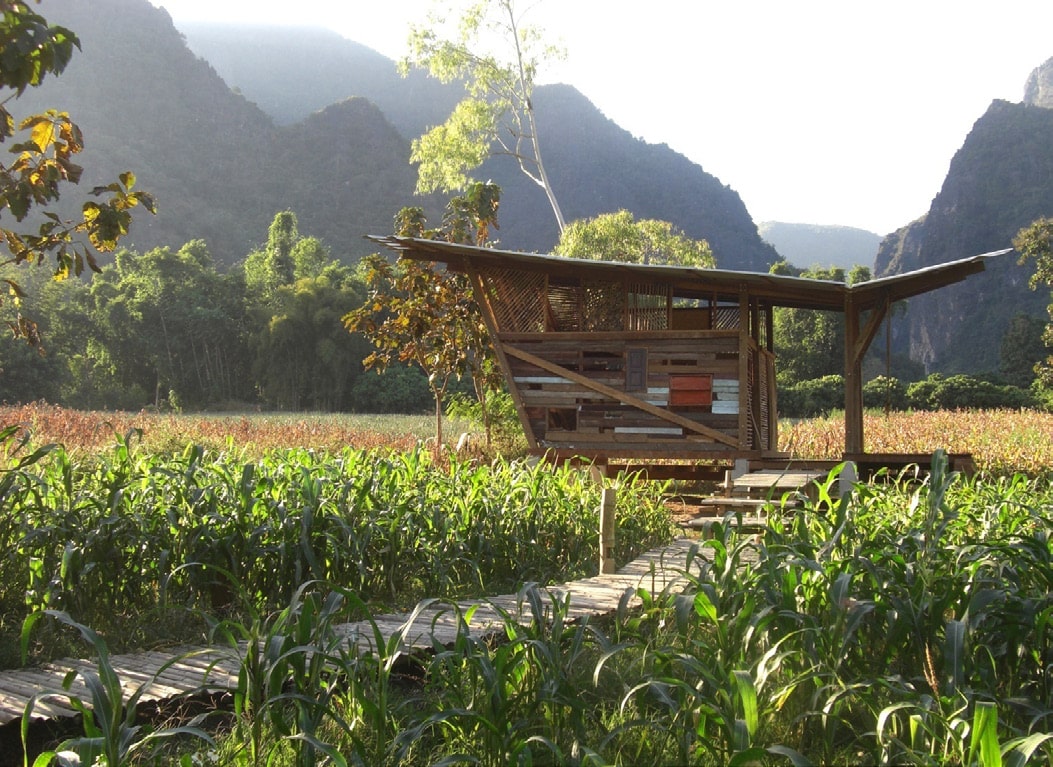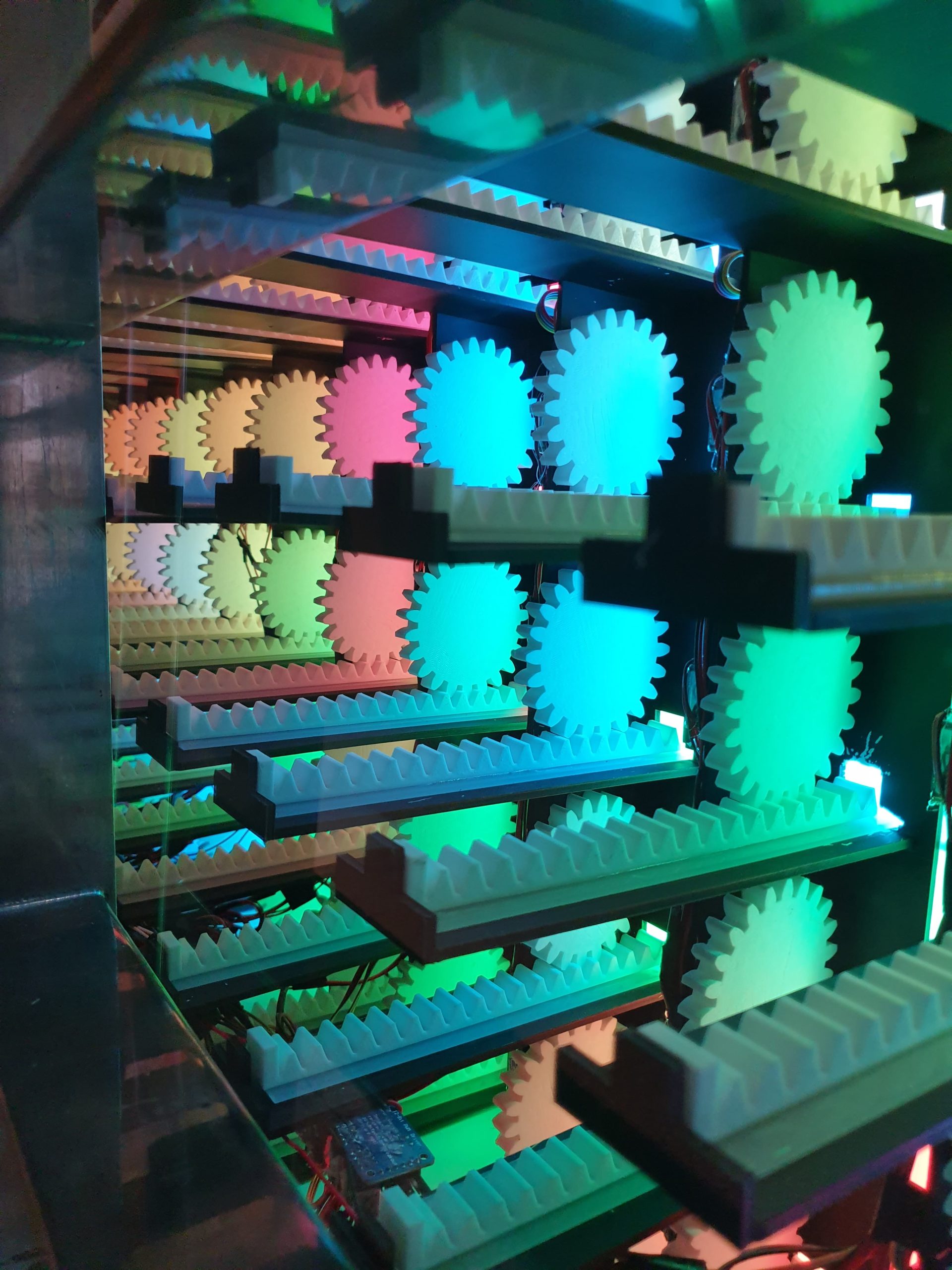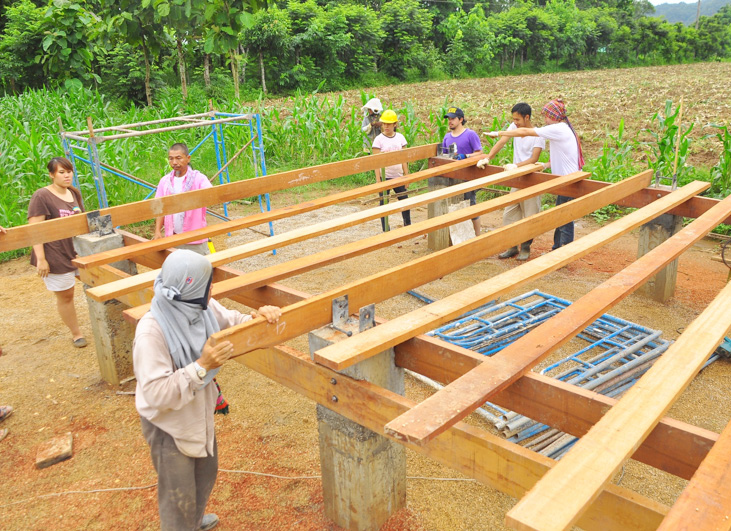The students designed and built a public gathering space at the base of the Doi Nang Non mountain range, specifically for the agricultural community. They opted for a combination of bamboo and local hardwoods as construction materials, chosen for their natural resistance to rot and pests. To tackle the problem of soil erosion on the steep slope, they incorporated planting areas and water canals. Additionally, considering the village’s lack of electricity, solar-powered lights were included in the project. This initiative not only provided a functional space for the community but also showcased sustainable practices in materials, landscape management, and renewable energy use.

Related Projects:

Indigenous Rangers
This program aims to design and build a new eco-tourism facility for an indigenous ranger community at the upper Nakhon Si Thammarat Mountain Range (NSTR). Over the past few years, INDA has developed intimate relationships with multiple national parks and local communities in the area. Within a protected tropical montane cloud forest (TMCF) lies a distinctive ecosystem known for its biological diversity, endemic species, and endangered wildlife. Under exceptionally humid marine and equatorial conditions, Sanyen (Tai Rom Yen National Park) is one of the largest TMCFs in Thailand. Tai Rom Yen National Park and Khao Luang National Park are working with local communities on an interdisciplinary and participatory approach to develop eco-tourism, educate people about conservation, and implement public awareness programs. Trail networks, exhibition spaces, camping facilities, and an information center must be re-conceptualized under new design frameworks.

Performative Clock
During the COVID-19 pandemic, we have experienced more physical isolation due to daily online activities such as Zoom meetings, Google Meet lectures, online exams, and digital submissions. After the pandemic, our social lives may change forever with limited social encounters and gatherings only reserved for special occasions. This may lead to less social interaction and fewer chance encounters which are valuable for a tightly-knit group such as the Faculty of Architecture where students spend most of their time together. Inspired by the giant Ghibli clock in Tokyo, the Performative Clock serves as one of the must-see attractions at Chulalongkorn University, and it attempts to reconnect the community through carefully orchestrated performances that attract the attention of the wider public.
